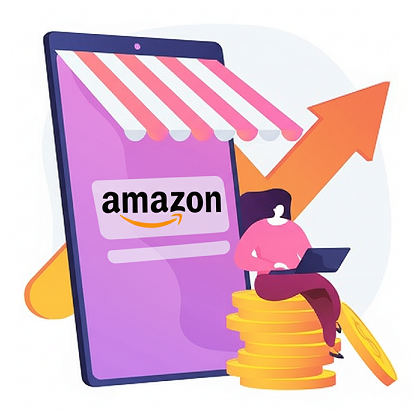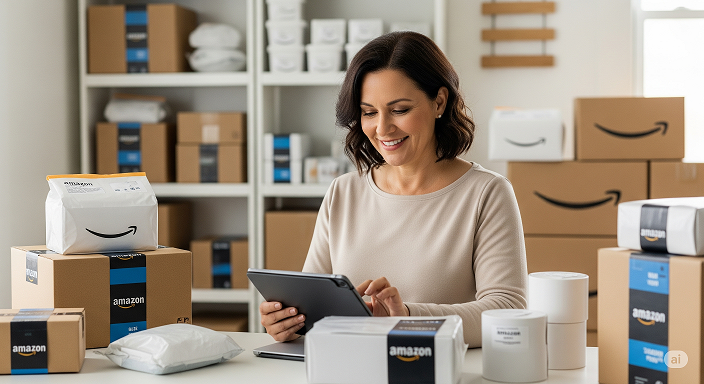In the ever-evolving landscape of e-commerce, particularly on a behemoth like Amazon, pricing strategies are paramount to success. Sellers constantly grapple with the decision of whether to employ dynamic pricing, which adjusts prices in real-time, or stick with static pricing, where prices remain fixed. Both approaches have their merits and drawbacks, but when it comes to driving sales on Amazon, which strategy truly reigns supreme?
Static Pricing: The Traditional Approach

Static pricing, as the name suggests, involves setting a fixed price for a product and maintaining it over a period. This strategy offers simplicity and predictability. For sellers, it means less time spent monitoring and adjusting prices, allowing them to focus on other aspects of their business, such as inventory management or marketing. For buyers, a stable price can foster trust and make purchasing decisions straightforward, especially for everyday items.
The advantages of static pricing include:
- Simplicity: Easy to implement and manage, requiring minimal oversight.
- Brand Perception: Consistent pricing can contribute to a perception of stability and reliability for a brand.
- Predictable Revenue: Easier to forecast revenue when prices are stable.
However, static pricing on a platform as dynamic as Amazon comes with significant limitations. It fails to account for fluctuating demand, competitor pricing, and inventory levels. This can lead to missed opportunities for increased sales during peak demand or being undercut by competitors during periods of low demand. In a marketplace where algorithms constantly optimize for competitiveness, a static price can quickly become uncompetitive, leading to lost sales and reduced visibility.
Dynamic Pricing: The Agile Strategist
Dynamic pricing, also known as surge pricing or demand pricing, involves continuously adjusting product prices based on real-time market conditions. These conditions can include competitor prices, demand fluctuations, time of day, inventory levels, customer browse behavior, and even external factors like weather. Amazon itself is a master of dynamic pricing, constantly tweaking prices across its vast catalog.
The benefits of implementing dynamic pricing on Amazon are numerous:

- Maximized Profitability: By adjusting prices upwards during high demand and downwards to clear inventory, sellers can optimize their profit margins.
- Increased Sales Volume: Lowering prices strategically during periods of low demand or when facing stiff competition can stimulate sales and move inventory faster.
- Enhanced Competitiveness: Automated repricing tools allow sellers to react instantly to competitor price changes, ensuring they remain competitive without constant manual intervention.
- Inventory Optimization: Dynamic pricing can help prevent stockouts by increasing prices as inventory dwindles or clear excess stock by dropping prices.
- Improved Buy Box Win Rate: On Amazon, winning the Buy Box (the “Add to Cart” button) is crucial for sales. Dynamic pricing tools can help sellers consistently maintain a competitive price that increases their chances of winning this coveted spot.
Despite its advantages, dynamic pricing isn’t without its challenges. Implementing it effectively often requires sophisticated repricing software and a deep understanding of market dynamics. Over-aggressive repricing can sometimes lead to price wars, eroding profit margins for all sellers involved. Furthermore, if not managed carefully, frequent price changes could potentially confuse or even alienate some customers, although on Amazon, customers are generally accustomed to fluctuating prices.
Which Drives More Sales on Amazon?
While static pricing offers simplicity, dynamic pricing is unequivocally the more effective strategy for driving sales on Amazon. The Amazon marketplace is characterized by intense competition, constant fluctuations in demand, and sophisticated algorithms that favor competitive pricing.
Sellers who adopt dynamic pricing are better equipped to:

- Respond to Market Changes: They can swiftly react to competitor price drops, ensuring they don’t lose out on sales.
- Capitalize on Demand Surges: They can raise prices during peak demand, maximizing revenue without sacrificing sales volume due to higher willingness to pay.
- Maintain Buy Box Dominance: Their agile pricing allows them to consistently offer a competitive price, crucial for visibility and sales.
- Optimize Inventory Flow: They can proactively adjust prices to manage inventory levels, preventing both overstocking and stockouts.
In essence, dynamic pricing allows sellers to be agile and responsive in a constantly shifting environment. It enables them to leverage data and automation to make real-time pricing decisions that optimize for both sales volume and profitability. While static pricing might work for niche products with stable demand and limited competition, for the vast majority of products on Amazon, dynamic pricing is not just an advantage, but a necessity for sustained sales growth and long-term success. The ability to adapt and optimize in real-time is the key differentiator in a marketplace where every cent and every second counts.







